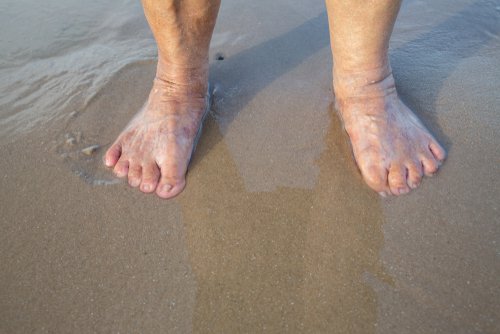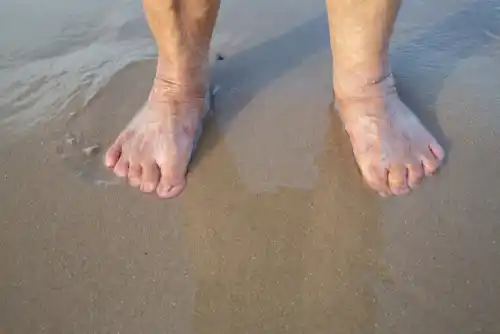 Peripheral neuropathy is a condition associated with diabetes that involves progressive degeneration of the arteries in your feet, many of which are wrapped around your nerves. This condition can become extremely painful and damaging to your feet, but it can also increase your risk of falling, especially as you age. This is no small matter, as 10% of neuropathy patients who fall will sustain a fatal pulmonary embolism, and 20-30% will have severe injuries.
Peripheral neuropathy is a condition associated with diabetes that involves progressive degeneration of the arteries in your feet, many of which are wrapped around your nerves. This condition can become extremely painful and damaging to your feet, but it can also increase your risk of falling, especially as you age. This is no small matter, as 10% of neuropathy patients who fall will sustain a fatal pulmonary embolism, and 20-30% will have severe injuries.
At Advanced Spinal Care, we know that peripheral neuropathy is both treatable and preventable. If you have diabetes, be sure to incorporate these practices into your daily routine to prevent painful neuropathy and potentially avoid a fatal fall:
Stay on Top of Your Diabetes
If you’ve already been diagnosed with diabetes, you know that peripheral neuropathy is just one of many conditions for which you are at risk, and you and your primary care provider have likely come up with a treatment plan that takes your individual needs and goals into consideration. The best way to prevent peripheral neuropathy and other comorbid conditions is to stick firmly to this plan. Be sure to maintain your blood sugar levels as advised by your doctor, and don’t miss any medications you may have been prescribed. If you need assistance staying on your medication schedule or remembering to check your blood sugar, reach out to those around you for helpful reminders.
Make a Few Lifestyle Changes
Lifestyle changes that are designed to help you manage diabetes can help reduce your risk of diabetic neuropathy at the same time. A balanced diet that helps you maintain appropriate blood sugar levels and a regular exercise routine can also work to strengthen the muscles in your feet, and to keep oxygen flowing through the arteries and nerves that may be affected by neuropathy.
Additionally, if you drink heavily or smoke at all, now is the time to cut back or quit. The nicotine found in cigarettes actively constricts your blood flow, making your nerves and arteries vulnerable to degeneration and neuropathy.
Examine Your Feet Regularly
When was the last time you took a good look at your foot? Regular self-examinations are extremely important for those with diabetes to catch symptoms of certain conditions (including neuropathy) in their early stages, when more plentiful treatment options are available. Unsure what to look for? The short list of potential signs of diabetic neuropathy includes:
- Dry skin
- Cracked skin
- Blisters of unknown origin
- Calluses
- Sores
- Unusual redness
It’s also important to care for your feet well if you’re at risk of peripheral neuropathy. Be sure to keep your toenails clipped, and avoid walking barefoot when you can.
Build a Relationship with a Specialist
While peripheral neuropathy is a common condition associated with diabetes, you should consider visiting an advanced physical medicine specialist if you believe you are exhibiting symptoms. Advanced physical medicine specialists can offer cutting-edge treatment for neuropathy that may be difficult to find elsewhere: for example, the specialists at Advanced Spinal Care & Rehabilitation have a unique, research-backed approach to treating neuropathy that uses light and vibrational frequencies to accelerate blood vessel tissue regeneration and create new blood vessels in your feet.
If you believe you may be showing early signs of peripheral neuropathy, do not delay: neuropathy is progressive, and can become extremely difficult to treat if allowed to worsen over time.
If you’re living with diabetes, don’t wait to treat the early signs of peripheral neuropathy. Request an appointment with Advanced Spinal Care today for a consultation at our office in Coshocton, Ohio.


